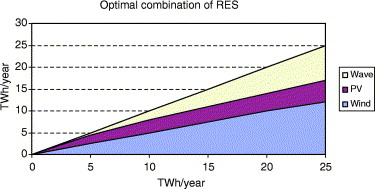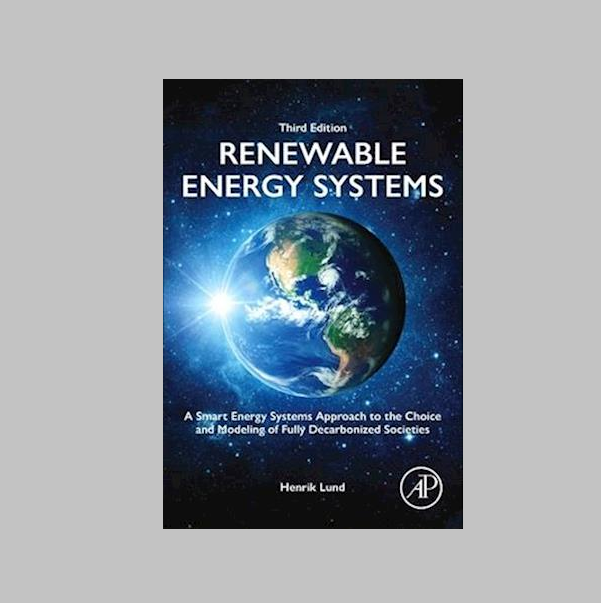Large-scale integration of optimal combinations of PV, wind and wave power into the electricity supply (2006)
Authors:
Henrik Lund
This article presents the results of analyses of large-scale integration of wind power, photo voltaic (PV) and wave power into a Danish reference energy system. The possibility of integrating Renewable Energy Sources (RES) into the electricity supply is expressed in terms of the ability to avoid excess electricity production. The different sources are analysed in the range of an electricity production from 0 to 100% of the electricity demand. The excess production is found from detailed energy system analyses on the computer model EnergyPLAN. The analyses have taken into account that certain ancillary services are needed in order to secure the electricity supply system.
The idea is to benefit from the different patterns in the fluctuations of different renewable sources. And the purpose is to identify optimal mixtures from a technical point of view. The optimal mixture seems to be when onshore wind power produces approximately 50% of the total electricity production from RES. Meanwhile, the mixture between PV and wave power seems to depend on the total amount of electricity production from RES. When the total RES input is below 20% of demand, PV should cover 40% and wave power only 10%. When the total input is above 80% of demand, PV should cover 20% and wave power 30%. Meanwhile the combination of different sources is alone far from a solution to large-scale integration of fluctuating resources. This measure is to be seen in combination with other measures such as investment in flexible energy supply and demand systems and the integration of the transport sector.

Contact
If you experience further challenges using the model that are not answered in any one of pages at the site, you are more than welcome to contact us and we will try to help you.
Email us hereBook, 3rd Edition out now

3rd Edition Renewable Energy Systems – A Smart Energy Systems Approach to the Choice and Modeling of Fully Decarbonized Societies
By Professor Henrik Lund
List price: USD 100.00 / GBP 76.76 / EUR 87.20
Buy here